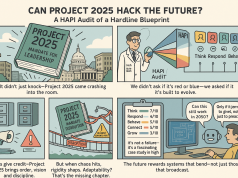In the bustling heart of economic discourse, few topics spark as much debate as the gig economy—a veritable crossroads of modern work where conventional job structures disintegrate into flexible, piecemeal engagements. The concept is deceptively simple: use technology to connect individuals with short-term work opportunities, commonly through apps or online platforms. Yet, beneath this simplicity lies a complex tapestry of varying implications for the workforce. Our readers at The Work Times, who share a certain kindred spirit with the discerning observers at The New York Times, are uniquely positioned at this intersection of modern work—either as consumers of gig services or as participants themselves, navigating the perks and pitfalls of gig work.
The allure of the gig economy is palpable—it promises autonomy, flexibility, and the ability to handcraft a work-life balance previously unattainable in traditional employment settings. For many, this is the embodiment of empowerment. Freelancers and independent contractors can cherry-pick assignments that match their skills and interests, often from the comfort of their homes or local coffee shops, and on schedules that they set. This flexibility can be especially appealing to caregivers, students, and retirees who may require nonstandard work hours.
However, with autonomy comes uncertainty. The flexibility that empowers also precariously perches workers on the brink of vulnerability. The absence of job security, a reliable income, and employment benefits such as health insurance, retirement plans, and paid leave is the stark reality for many in the gig workforce. There is also the matter of worker classification—gig workers are often considered independent contractors, which absolves the platform providers from the responsibilities of employers under labor laws.
For a well-educated, financially-secure individual, the gig economy might be an invigorating playground of opportunity. Yet, for those with fewer resources, the gig economy can perpetuate a cycle of exploitation, as they might accept less favorable terms out of necessity rather than choice, and with few safeguards or recourse.
The demographic that forms The New York Times readership is characterized by a nuanced understanding of these socio-economic landscapes, thus raising compelling questions regarding corporate responsibility and public policy. It is imperative that platforms honor the drive for personal empowerment without compromising the well-being of their workers. This is where policy changes can serve as a beacon of hope.
Legislators, recognizing the gig economy’s growth and its impact on the workforce, are starting to examine how laws can evolve to better protect gig workers while fostering innovation and flexibility. The development of portable benefits, where benefits are tied to the individual rather than the job, for instance, could be a significant stride toward providing gig workers with much-needed social security. Similarly, clearer guidelines around worker classification can ensure fair treatment and prevent the misclassification that often leads to exploitation.
Moreover, corporate responsibility should not be a missed note in this symphony of changes. Companies that rely on gig workers must acknowledge the role that they play in their workforce’s financial stability and overall well-being. Investing in fair wages, transparent policies, and avenues for worker feedback can set a precedent that moves the entire industry towards a more equitable and sustainable model of gig work.
In conclusion, while the gig economy continues to bloom, whether it ultimately serves to empower or exploit rests on the collective shoulders of policymakers, corporations, and the workers themselves. The narrative is still being written, and all parties must advocate for a future where flexibility does not come at the cost of fairness. As we, The Work Times, champion a healthy, informed workforce, our call to action remains simple yet profound—to create an economy that works for all, gig or otherwise.




























